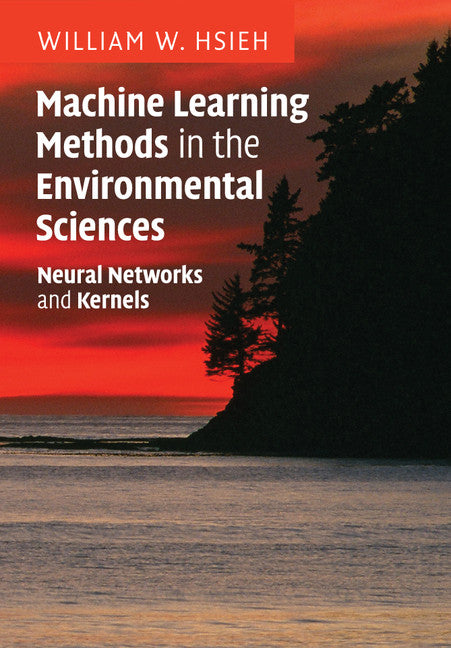Freshly Printed - allow 8 days lead
Couldn't load pickup availability
Machine Learning Methods in the Environmental Sciences
Neural Networks and Kernels
A graduate textbook that provides a unified treatment of machine learning methods and their applications in the environmental sciences.
William W. Hsieh (Author)
9781108456906, Cambridge University Press
Paperback / softback, published 1 March 2018
363 pages
24.5 x 17 x 2 cm, 0.64 kg
'This book is unique because it presents machine learning in the context of environmental science applications. I found it to be a valuable tool to bring myself up to date with the historical and recent developments in the subject of machine learning, and I believe the reader will too. The purchase price is modest. I highly recommend that any student or researcher interested in machine learning methods obtain a copy.' William Burrows, Canadian Meteorological and Oceanographic Society Bulletin
Machine learning methods originated from artificial intelligence and are now used in various fields in environmental sciences today. This is the first single-authored textbook providing a unified treatment of machine learning methods and their applications in the environmental sciences. Due to their powerful nonlinear modelling capability, machine learning methods today are used in satellite data processing, general circulation models(GCM), weather and climate prediction, air quality forecasting, analysis and modelling of environmental data, oceanographic and hydrological forecasting, ecological modelling, and monitoring of snow, ice and forests. The book includes end-of-chapter review questions and an appendix listing websites for downloading computer code and data sources. A resources website contains datasets for exercises, and password-protected solutions are available. The book is suitable for first-year graduate students and advanced undergraduates. It is also valuable for researchers and practitioners in environmental sciences interested in applying these new methods to their own work.
Preface
1. Basic notions in classical data analysis
2. Linear multivariate statistical analysis
3. Basic time series analysis
4. Feed-forward neural network models
5. Nonlinear optimization
6. Learning and generalization
7. Kernel methods
8. Nonlinear classification
9. Nonlinear regression
10. Nonlinear principal component analysis
11. Nonlinear canonical correlation analysis
12. Applications in environmental sciences
Appendix A. Sources for data and codes
Appendix B. Lagrange multipliers
Bibliography
Index.
Subject Areas: The Earth: natural history general [WNW], Computer science [UY], Environmental science, engineering & technology [TQ], Mathematical physics [PHU]


